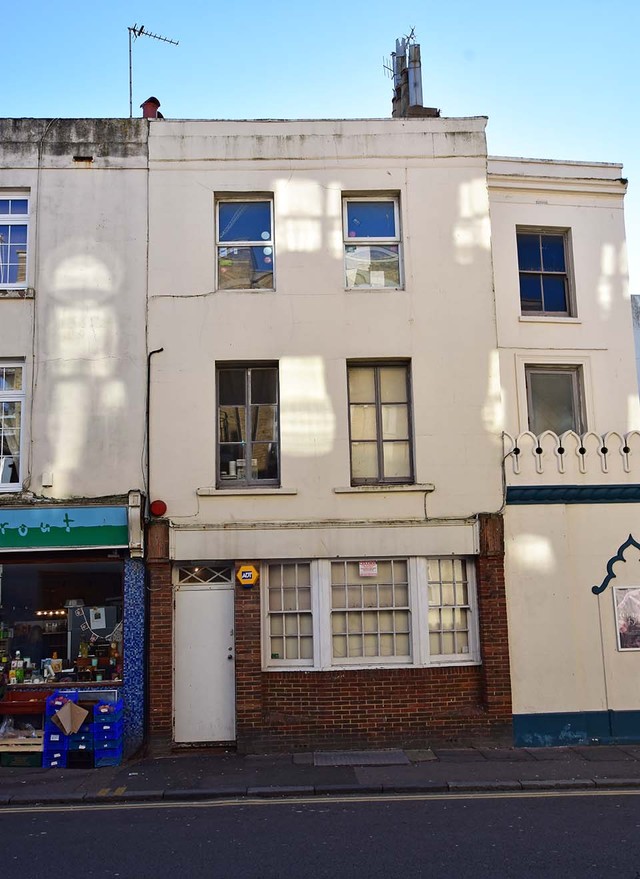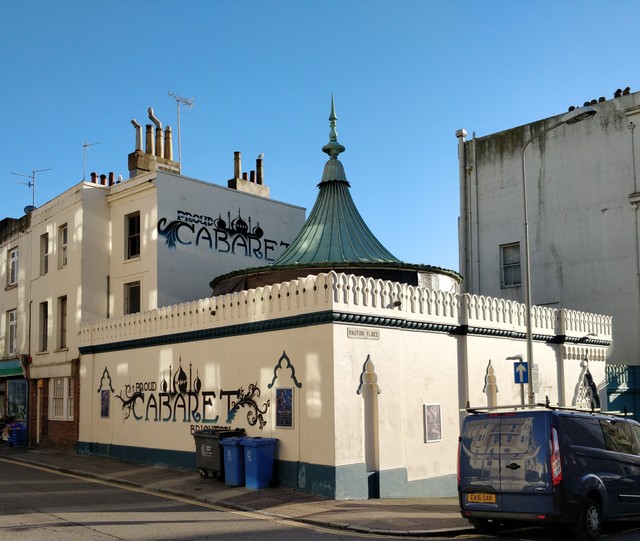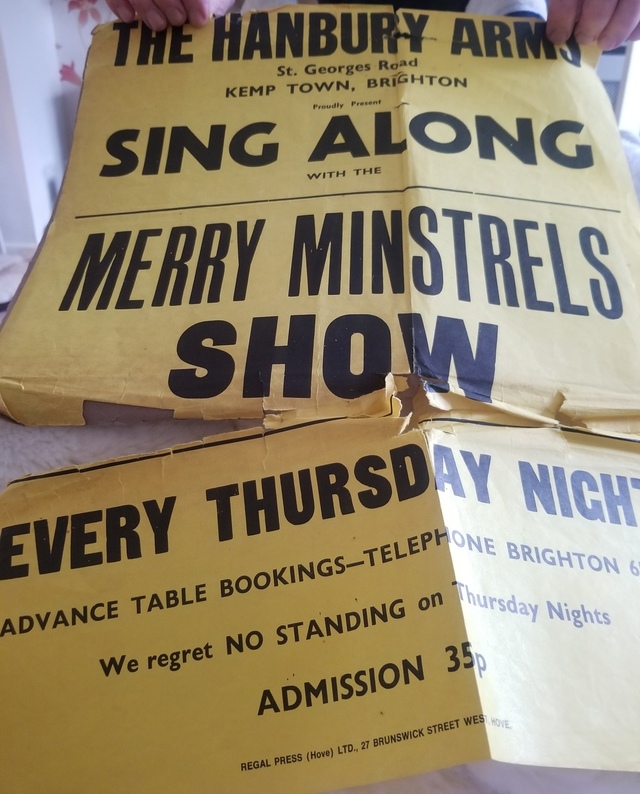» Main Index

» Search This Site

» Submit Update

» Contact Us


|
|

|
Home > Sussex >
Brighton > Hanbury Arms
Hanbury Arms
 |
|
Date of photo: 2019 |
Picture source:
Michael Schouten |
|
|
|
|
The Hanbury Arms was situated at 83 St
Georges Road. This grade-II listed
building was converted from a private house to a pub in 1865. The pub
incorporates a mausoleum built in 1892 by Sir Albert Sassoon who was
originally called Abdullah. He was a descendant of Sheikh Sason ben Saleh,
who was head of the Jewish community in Baghdad in the late eighteenth
century.The Sassoons’ remains were moved to London in 1933 when Albert
Sassoon’s grandson sold the property. The mausoleum was used as an air-raid
shelter during the war and then bought by the Hanbury Arms in 1953. It closed in 2012. |
|
Source: T C |
|
|
|
|
|
|
Listed
building details: |
|
No.83 The Hanbury Arms Public House ST
GEORGE'S ROAD. Mausoleum for Sir Albert Sassoon, now public house. 1892.
Stucco. Tent roof of copper. Square in plan with wing to south. EXTERIOR:
single storey over basement. In imitation of Nash's Mughal-inspired design
of the Royal Pavilion (qv). Elevation to Saint George's Road is blank,
except for a pilaster with shallow trilobed-arched recess at party wall and
at corner. Cable cornice and lotus parapet continuous. On Paston Place
elevation, piers with a pair of thick pilasters with trilobed-arched
recesses. Flat-arched entrance to right set in aedicule formed by projecting
section of wall and topped by a trilobed-arch, variously moulded;
machicolated parapet above entrance. To the right of the entrance a lower
range containing a second entrance with cornice and parapet to match main
elevations. Roof circular in plan, supported on a low panelled drum; metal
sheets with rib rolls terminates in acanthus-leaf and urn finial similar to
those found on the Pavilion. The listing includes the 3-storey, 3-window
range terraced house of irregular plan to the east, which is now the Hanbury
Arms. HISTORICAL NOTE: Sir Albert lived at No.1 Eastern Terrace (qv), and
was buried here in 1896; his son, Sir Edward, was interred in 1912. Their
remains were removed in 1933 by Sir Philip, who sold the structure. It
served as an air raid shelter during the war, and became part of the
adjacent public house in 1953. |
|
|
|
Do you have any anecdotes, historical information, updates or photos of this pub? Become a contributor by submitting them here. Like this site? Follow us on

You can also make email contact with other ex-customers and landlords of this pub by adding your details to this page. |
|
|
|
Other Photos |
 |
|
Date of photo: 2019 |
Picture source:
Michael Schouten |
 |
|
|
Picture source:
Felicity Snowden |
|
|
|
|
|